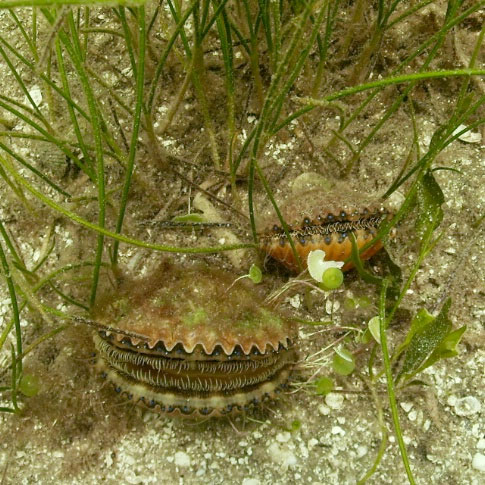 The Gulf County bay scallop season will open to harvest Sept. 23. The 2017 season was postponed earlier this year due to a naturally occurring algae bloom (Pseudo-nitzschia) in St. Joseph Bay that affects shellfish. Recent samples have indicated that the scallops in St. Joseph Bay are safe for human consumption and meet FDA requirements for opening harvest in the bay. The Florida Fish and Wildlife Conservation Commission (FWC) will continue testing of the bay.
The Gulf County bay scallop season will open to harvest Sept. 23. The 2017 season was postponed earlier this year due to a naturally occurring algae bloom (Pseudo-nitzschia) in St. Joseph Bay that affects shellfish. Recent samples have indicated that the scallops in St. Joseph Bay are safe for human consumption and meet FDA requirements for opening harvest in the bay. The Florida Fish and Wildlife Conservation Commission (FWC) will continue testing of the bay.
The 2017 season will be open for 16 days, with the last day of harvest being Oct. 8 and closing Oct. 9. This season opening includes all state waters (shore to 9 nautical miles) from the Mexico Beach Canal in Bay County through the westernmost point of St. Vincent Island in Franklin County. All other regulations apply, including a daily bag limit of 2 gallons of whole bay scallops in shell or 1 pint of bay scallop meat per person, with a maximum of 10 gallons of whole bay scallops in shell or 1/2 gallon bay scallop meat per vessel.
The scallop population in Gulf County is also still recovering from a 2015 red tide. Restoration efforts are underway in the southeast area of the bay south of Black’s Island. Swimming, boating, fishing or scalloping in the restoration area marked with FWC buoys is prohibited. The recent Pseudo-nitzschia algal bloom is not expected to impact the scallop population.
The bay scallop season for Gulf County was originally scheduled to open July 25 and close Sept. 10.
For updates and more information on bay scallops, visit MyFWC.com/Fishing and click on “Saltwater Fishing,” “Recreational Regulations” and “Bay Scallops.”
In areas outside of Gulf County, waters from the Pasco-Hernando County line to the Suwannee River and from the Fenholloway River in Taylor County through the westernmost point of St. Vincent Island in Franklin County will close to harvest Sept. 25. The bay scallop season in state waters from the Fenholloway River in Taylor County to the Suwannee River in Dixie County closed Sept. 10.
Help FWC’s scallop researchers by completing an online survey at svy.mk/bayscallops. Harvesters can indicate where they harvest scallops, how many they collect and how long it takes to harvest them. Participants can email BayScallops@MyFWC.com to ask questions or send additional information.
Learn more about long-term trends in the open and closed scalloping areas by visiting MyFWC.com/Research and clicking on “Saltwater,” “Molluscs,” “Bay Scallops” and “Season.”
